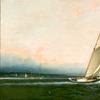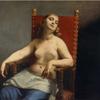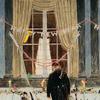(Correction) Wake Up and Embark on a Journey that Will Change You…Forever, Says the Asian Art Museum
- SAN FRANCISCO, California
- /
- January 12, 2020
(The below was corrected on 1/13/20 to include missing text due to a technical error.)
The Asian Art Museum in San Francisco opens your eyes with Awaken: A Tibetan Buddhist Journey Toward Enlightenment, featuring almost 100 vibrant paintings, sculptures, and textiles from hundreds of years ago to today.
This New Year, the Asian Art Museum invites visitors to slow down, look hard, and “wake up” from the ordinary world. Awaken: A Tibetan Buddhist Journey Toward Enlightenment, on view Jan. 17 – May 3, 2020, showcases how integral artistic endeavor is to Tibetan Buddhist spiritual practices, underscoring art’s power to focus and refine our awareness. By immersing visitors in fantastic Buddhist landscapes of Tibetan Buddhism and introducing the enlightened beings that appear there, Awaken provides a taste of what awareness might be—if only we would wake up.
“A Tibetan Buddhist initiate’s journey toward enhanced awareness is, in part, facilitated through visualizations—and such visualizations always require artistic models,” explains Dr. Jeffrey Durham, Associate Curator of Himalayan Art, Asian Art Museum and exhibition co-curator.
“The landscapes of Himalayan Buddhism, along with the powerful entities that populate them, make for a dramatic visual repertoire unrivaled in the world of religious art, allowing the exhibition journey to culminate with a powerful moment of visual and spiritual clarity made manifest by a blend of art and experience.”
The exhibition unfolds as audiences progress through a series of carefully choreographed galleries to engage with almost 100 spectacular objects. Vibrant sculptures, paintings, textiles and book arts (made between 800 and 2016) chart a transformative pathway from the clamor of daily life to the serenity of awakening. The exhibition brings together these important Tibetan Buddhist artworks for the first time—many of which have never traveled before. Tens of thousands of visitors made the “journey” while Awaken was on view at the Virginia Museum of Fine Arts (VMFA) from Apr. 27–Aug. 18, 2019.
“Awaken explores how Tibetan Buddhist art has perfected techniques to convey the ineffable, from multiple cosmic dimensions, to the supreme interconnection of birth and death, to our ability to reshape reality through thought alone,” continues Durham. “Understood this way, the eye-popping color and mesmerizing, intricate detail of these artworks becomes an invitation to look closer and closer—and ultimately addresses the universal human quest to be fully present in the moment.”
Alongside Durham of the Asian Art Museum, the exhibition is co-curated by Dr. John Henry Rice, Virginia Museum of Fine Arts E. Rhodes and Leona B. Carpenter Curator of South Asian and Islamic Art, each representing one of the country’s most extraordinary collections of ancient and contemporary Himalayan art. Drawing largely from the collections of these two museums, the exhibition features additional works from private collections and institutions including the Rubin Museum of Art, the Newark Museum and the Museum of Fine Arts, Boston.
As the full title suggests, Awaken: A Tibetan Buddhist Journey Toward Enlightenment unfolds through an orchestrated series of gallery spaces arranged as a quest. The exhibition begins with a visual assault: a modern-day video meant to briefly overwhelm in order to remind us of the central problem that Tibetan Buddhist art is designed to address—that we are lulled asleep by the ordinary world’s clamor and therefore blind to the true nature of reality.
Further in the exhibition, visitors learn some of Buddhism’s essential teachings, meet a “guide” represented by a painting of 15th-century Tibetan philosopher Gorampa Sonam Sengge and view a map in the form of a painted mandala from Gorampa’s monastery, Ngor. Visitors encounter fearsome guardians, then explore the range of spiritual tools and weapons that symbolize and aid aspects of the meditative process, including a fabulous flaming skull trident from 18th-century Tibet.
The exhibition takes you to the center of a gallery, where visitors encounter a fearsome, five-hundred-year-old sculpture of the Lightning Terror, Vajrabhairava—the Destroyer of Death. Finally, visitors emerge into a luminous space, where they “meet” a sublime 12th-century stone sculpture of a crowned Buddha who, despite his mass, seems to defy gravity and subvert our ordinary conceptions of solid and weightless—a visual metaphor for enlightenment.
In addition to major historic works, Awaken also features three mind-bending contemporary paintings by Tsherin Sherpa, who trained in traditional Tibetan thangka painting with his father, Urgen Dorje, a renowned thangka artist from Ngyalam, Tibet. Sherpa is known for his eye-catching ability to split, melt, or otherwise reconfigure large-scale neo-traditional paintings to effectively express the complex mental tactics that Tibetan Buddhism deploys to sharpen the mind and focus the attention of adherents.
“I’m thrilled that visitors will experience these stunning artworks in a context that restores their original purpose—connection, self-understanding, and a greater awareness of why we exist in this world together,” says Dr. Jay Xu, Asian Art Museum Director and CEO. “Presenting the art through a ‘questing’ narrative that invites audiences to be both viewer and participant reflects the goals of the Asian Art Museum’s ongoing transformation of the visitor experience: the absolute necessity of deep engagement with art—an engagement that’s the heart and soul of Tibetan Buddhism.”
Accompanying the exhibition is an illustrated 252-page catalogue published by the Virginia Museum of Fine Arts and distributed by Yale University Press, featuring essays by co-curators Durham and Rice. Additional contributors include scholars and experts Elena Pakhoutova, Katherine Anne Paul, Alexander von Rospatt, Eric Huntington, Tsherin Sherpa, and Paul Ferguson. Innovative essays address the exhibition’s themes: the Tibetan Buddhist tradition, the quest along the path to enlightenment, the transformative role of visual arts in Tibetan Buddhist practices, and the journey to enlightenment. The hardcover catalogue can be ordered online (https://store.asianart.org/) or by contacting the Asian Art Museum store at 415.581.3500.




10270x400_c.jpg)








_-Closing-the-Distance_100x100_c.jpg)








